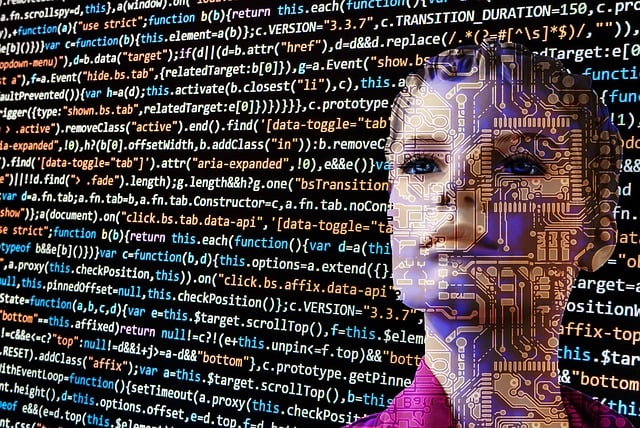Consider this situation. It’s a child of 5 years. He goes and burns his hand by touching a hot utensil. As painful and hurtful it may be for the child and his parents and caretakers, what does the child really take away from the incident apart from the sores. He understands that touching a hot utensil will necessary imply the same situation and what does he do then, he strategically avoids doing that. No one needs to instruct him now not to touch such utensils, he knows it for itself.
Now consider the example of a Robot. As hot utensils need not necessary hurt it, let’s make it jump into a pool of water (considering water immediately deactivates it). The robot is asked to jump and he jumps and deactivates itself. But will it jump the next time you ask it to jump. It could but not necessarily.
According to Whatis,
“Machine learning is a type of artificial intelligence (AI) that allows software applications to become more accurate in predicting outcomes without being explicitly programmed. The basic premise of machine learning is to build algorithms that can receive input data and use statistical analysis to predict an output value within an acceptable range.“
Modern technology that we have today is so advanced that it is capable of giving to robots what we hold most dear, Intelligence. Such machines are what we call AI or Artificial Intelligence. These sophisticated machines have the capability to understand what to do and what not to. They have a basic set of programming which they will definitely comply with which is why in most cases the robots will jump into the water if you instruct it to.
But when it is programmed in such a way that it won’t obey self destructive instructions then it wouldn’t after it understands the fact that water will kill it. This understanding capability is given to robots using a programming technique referred to as Machine Learning.
The term was coined by Arthur Samuel, a pioneer in the field of AI. He defines Machine Learning as a sub field of computer science that gives computers the ability to learn without being explicitly programmed. The concept of machine learning traces its roots to pattern recognition and computational learning theory and involves extensive usage of algorithms that learns from and makes predictions from data.
These algorithms allow for variability in the conduct of the machine itself, unlike to a situation when it has a static programming. This is what was implied in the earlier illustration. A robot with static programming will jump no matter what, but a robot with machine learning algorithms at its core will not jump if on the basis of prior data he knows it’s going to kill him. This programming model necessarily depends on data inputs and plays a significant role in multiple applications from games to email filtering to OCR etc.
Machine learning as a concept is divided into three broad sub categories, Supervised Learning where the computer is provided illustrative inputs and the required outputs and the aim is to convert the inputs into outputs.
The next category is Unsupervised Learning where the computer is left on its own to find the input and may be a goal in itself by requiring the device to identify hidden patterns within data etc.
Reinforcement learning forms the third type of Machine learning where the program has to interact with a dynamic active environment and perform a task according to the actions in the environment.
Importance of Machine Learning
Table of Contents
The importance of machine learning in today’s world is manifold. As mentioned above it is used for multiple purposes from OCR to Games. The importance of this utility stems from its very nature itself. Unlike conventional model, the machine learning model relies heavily on the inputs provided by the user. In the conventional model it is arguable that inputs are only accessory even though a basis to the result as the process will take place on the basis of any valid input.
Let’s say it is providing two values 5 and 6 to a addition operation or any input as long as it’s a number. But in the machine learning model inputs determine result completely. Let’s say the program dictates that a task be executed only when values 6 and 5 are given, then the task will be executed only when the exact particular inputs are given. The machine has to necessarily identify and learn whether the input that has been given is one it should act upon.
This is why this model plays a important role in diversified fields such as Medical Diagnosis, Translation, Cheminformatics, DNA Sequencing etc. This model necessarily implies making machine more human in terms of intelligence. This thus allows for the proper carrying out of many functions without human assistance and explicit programming. As such machine learns reduces human effort and provides for the functioning of a system with minimal effort. It is the capability to impart the power to adapt to a machine, that makes Machine learning very important.
Popular Machine Learning Methods
Over the years many methods have come to be developed for machine learning. These methods ranges from Artificial Neural Network algorithms to Clustering to Bayesian networks and more. These methods are quite technical but still easy to understand. Five of the most used methods are :
1. Artificial Neural Network Algorithms
The Algorithms that have been inspired and modelled on the neural network scheme of the human body are referred to as ANN Algorithms. The ANN forms a sub-field of various algorithms numbering in hundreds which tackle various problem types. The information that flows through the network determines what structure the ANN takes and the structure is completely reliant on the input and output.
They are non-linear statistical data modelling tools. ANN comprising of algorithms such as Perceptron, Back-Propagation etc matches patterns and are commonly used in regression and classification problems to make accurate predictions.
2. Instance-based Algorithms
Instance based algorithms composing of k-Nearest Neighbour (kNN), Self Organizing Map (SOM) etc are algorithms with decision problems backed up by instances, illustrations or scenarios of training data that are considered central to the framework.
These algorithms include building databases of such training data and doing a comparison of the input data with those already documented in the server to find the best match to facilitate accurate prediction. They instead of performing generalisation engages in the process of comparison of new instances with the ones already mapped into it. They are also known Memory based Algorithms.
3. Dimensionality Reduction Algorithms
Dimensionality Reduction Algorithms composed of Principal Component Analysis, Sammon Mapping, Multi-Dimensional Scaling etc are algorithms aimed at accessing the inherent internal structures of data to sum up and shorten it using lesser amounts of information.
It reduces the number or quantity of random unsystematic variables under consideration by using principal variables. It involves the aspects of feature selection and feature extraction.. These algorithms allows for viewing and simplifying multi dimension data for use in supervised learning methods. These algorithms are extensively used in classification and regression models.
4. Clustering Algorithms
Clustering Algorithms are used to provide descriptions of classes of problems and classes of methods. They can be both centroid based or hierarchial and uses structures within the data to organize them into clusters or groups of maximum similarities. These algorithms include k-Means, k-Medians etc. Clustering is an important task associated with data mining and can be used for statistical data analysis as well.
5. Bayesian Algorithms
Bayesian Algorithms are those which are based on Bayes’ theorem which deals with conditional probability of probable causes of observed outcomes. It states that each of a set of possible causes for a given observed outcome can be computed from the knowledge of the probability of each cause and the conditional probability of the outcome of each cause. These algorithms commonly used for classification and regression include Naive Bayes, Bayesian Network etc.
Machine Learning Industrial Applications
The process is extensively is used in multiple industries some of which are :
-
Gaming
The Gaming industry is a direct result of the advent of Machine Learning. If not machine learning, games would not technically exist at all. Games require the device, let it be a console or a PC to understand the input and act accordingly. Hence, supposing we are playing Splinter Cell, when the player presses Shift + W, the character in the game runs and when he presses CTRL he goes prone.
The capability to understand what to do that input underlines this and all other games. The importance of Machine learning is of even greater importance in a strategy game like Chess, where in order to be competitive the game has to think ahead and understand the player’s move and tactic and counter it with its own.
-
Information Retrieval
It is quite easy to obtain information on the internet. But the processes that take place behind the curtains is intricate and complicated. Once a search string is typed into the search box, and the enter key is pressed, the computer has to cross reference the search string against the presence or absence of such search string across millions of documents and all of which happens in a second.
Such capability of cross referencing documents has helped us immensely by providing access to resources which people in the older days had to manually find and apply.
-
Optical Character Recognition
All of us are quite aware of OCR marking sheets, where all of us are discreetly supposed to make proper marks, the presence or absence of which will be identified to record your inputs. This devices also works under the methods of Machine learning and has truly allowed for the simplification of gathering information for surveys, gather answers to exams etc.
-
Advertising
Most of us have clearly noticed the fact that the advertisements one ends up seeing online, either on Facebook or some other social networking site is that of the things that you most frequently search for. When a user searches for a pair of trousers, this information is stored and then used by the devices to identify what the user wants, which are trousers. Hence advertisements according to the user’s needs is displayed. The same thing happens with opinion which is a shame.
-
Diagnosis
The concept of Diagnosis in AI forms the basis for all antivirus programs that we use today. The concept involves using machine learning to identify whether the behaviour associated with a system is proper or not. When the device detects it is not proper then the anomaly is identified and reported so as to prevent system malfunction.
-
Speech Recognition and Linguistics
Machine learning plays a very important role in applied linguistics including Speech recognition and speech synthesis. The device uses phonetic and phonemic knowledge to relay voice interfaces to the computers. This allows for machine translation, computer assisted translation and many other applications.
Distinguishing Machine Learning from Data Mining and Deep Learning
The concepts of Machine Learning, Data Mining and Deep Learning are not one and the same and have some marked differences.
Data Mining and Machine Learning
Data Mining refers to a process which involves the extraction of information from a data set and the transformation of such data set into an comprehensible structure for future use. Machine Learning on the other hand is a technique used for the construction and further study of systems that learns from data.
The main area of focus in data mining is the discovery of unknown properties whereas the main focus of machine learning is prediction from properties already known training data. Data mining has multiple categories from Association Rules, Classification, Clustering etc and Machine Learning is composed of Supervised, Unsupervised and Reinforcement methods.
Data mining involves automatic or semi automatic analysis of bulk data and involves the application of Machine learning methods for different ends. Conversely, Machine learning as a concept also extensively uses data mining technique in the form of unsupervised learning to act as a preprocessing step for better accuracy. Data Mining as a concept is used for forecasting, classification, association, clustering and sequencing.
Deep Learning and Machine Learning
Also known as Deep Structured or Hierarchial learning, Deep Learning is a broader category of machine learning that is extensively based on learning data representations instead of task specific algorithms. This learning like all machine learning methods can be either supervised or unsupervised. The data representations are inspired from the working of the nervous system such as neural coding which defines the relationship between stimuli and associated neuronal responses.
Deep learning architectures include deep neural networks, deep belief networks and recurrent neural networks. These methods have been applied to multiple fields from computer vision to social network filtering and natural language processing. Machine learning thus forms the broader category to which Deep Learning belongs. Deep Learning uses algorithms which are Artificial Neural Networks composed of multiple layers.
These algorithms are used to build larger and more intricate neural networks with higher levels of functioning . They are mostly concerned with semi-supervised learning problems with large datasets composed of minimal labelled data. They model high level data abstractions through model architecture use composed and made out of multiple non linear transformations.
Conclusion
Machine Learning in its various forms and through its various applications play a very important role in the amenities that we take for granted. This concept has driven development across the field of technology and has allowed for the creation and development of multiple apps that make our life much much easier. It runs in the background of most of the apps that we are aware of. The importance of machine learning cannot thus be understated.








